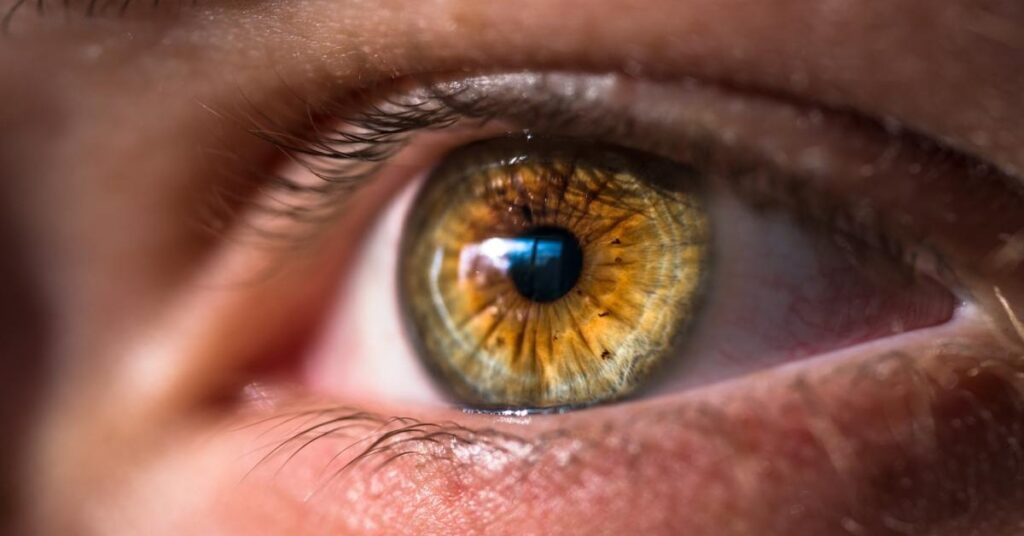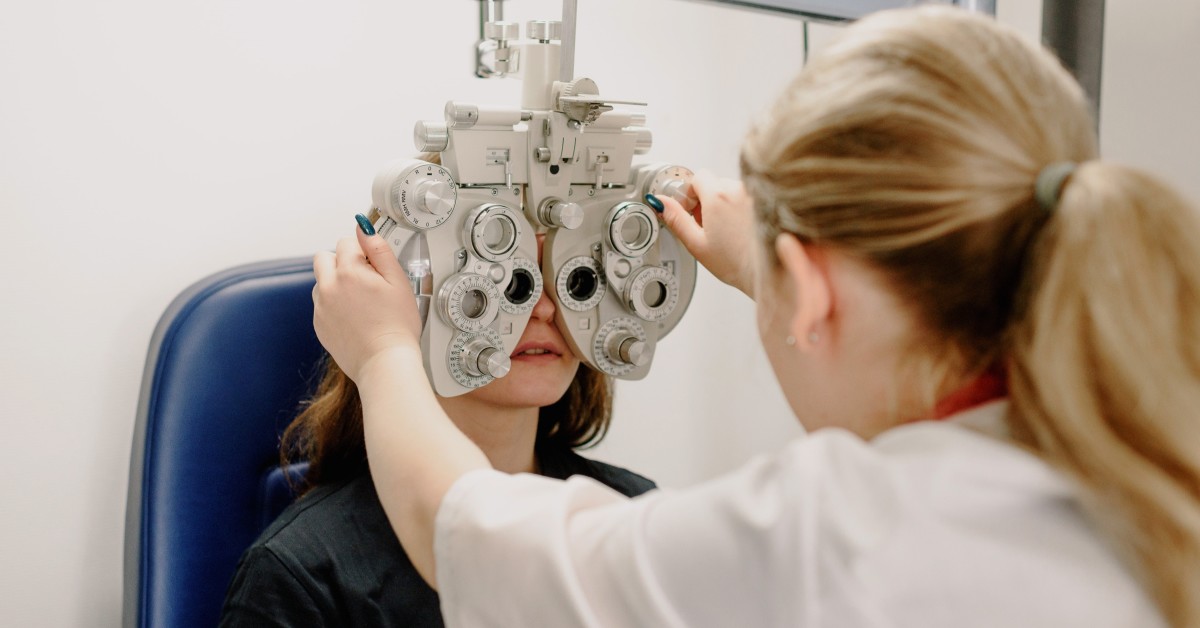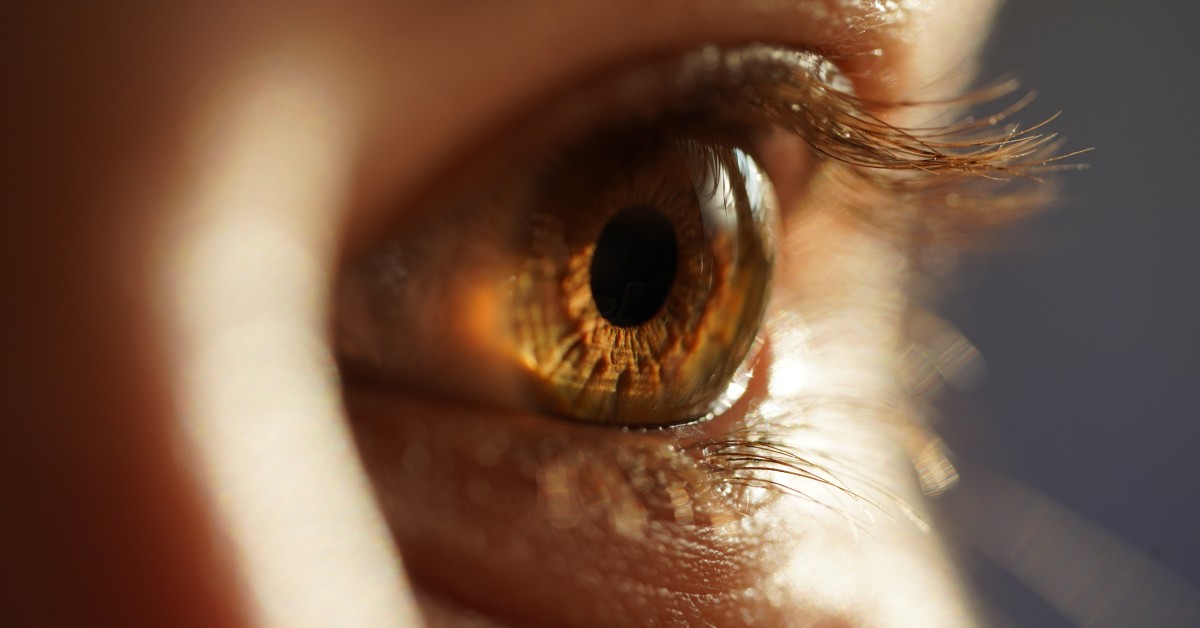
Why Become a Cornea and Contact Lens Optometrist?
Cornea and contact lens optometrists are highly educated practitioners; they [...]

We tend to think of tears as harbingers of tragedy or heartfelt emotion when, in actuality, there is nothing more natural than producing tears. Tear ducts ideally engage in round-the-clock tear production. It is one of the processes by which our eyes remain functional. Obstacles to this process, however, can lead to a condition known as dry eye, in which the tears produced are either too few or lack quality. Enter the dry eye optometrist.
In this article, we’ll discuss what a dry eye optometrist does and what it takes to become one, including:
Dry eye disease (DED), also known as dry eye syndrome (DES), is a common condition that human beings have encountered throughout time. Only recently, however, have eye doctors begun to diagnose and treat it at a level commensurate with its occurrence. Symptoms of dry eye include blurriness, itchiness, irritation, inflammation, excess sensitivity, excessive tearing, and the feeling of a foreign object under one’s eyelid.
While the condition remains underdiagnosed and undertreated, awareness of dry eye has increased significantly, leading to wider availability of tests and treatment options to address the condition.
Our natural tears are responsible for both hydrating and cleaning our eyes. As such, every time we blink, tears are spread across the surfaces of our eyes, with excess draining off into ducts at the corners of the eyelids and flowing to the back of the nose.
Tears are tri-layered, with one layer of water (to hydrate and clean), one of oil (to keep the water from evaporating) and one of mucous (to ensure that the tears spread equitably across the eye’s surface). Dry eye occurs when your eyes are not creating enough tears or when the tears lack water, leading to insufficient hydration—or when the tears lack oil, leading to premature evaporation. This can occur for a multitude of reasons, complicating the dry eye optometrist’s job.
A dry eye optometrist’s first duty is to test for presence of dry eye disease. This starts with reviewing the patient’s history for medical conditions (e.g., rheumatoid arthritis) that might make them more prone to develop dry eye. This is followed by examination of the external eyes, eyelids, and corneas. Blink dynamics are assessed with bright lights and magnification.
Both the quality and the quantity of the patient’s tear production are measured, sometimes with a tear break-up time (TBUT) test. This involves placing a drop of dye on the eye and then watching the reaction under a blue light to determine the stability of a patient’s tear film. This helps to determine whether any sort of meibomian gland dysfunction (problems with the gland that produces the oil in tears) is present. Upon confirmation of dry eye disease, a dry eye optometrist will begin treatment.
One of the most common treatments for dry eye unsurprisingly involves artificial tears, which are usually purchased over the counter. Warm compresses are another effective home treatment to clean the eyes and stimulate the flow of oil to combat dryness. Doctors may also advise adding an omega-3 fatty acid supplement to one’s diet.
More stubborn cases of dry eye necessitate stronger treatments. Dry eye treatment for these patients may involve medicinal ointment or gel, applied right before bed to prevent problems from the blurred vision that may occur upon application. Alternatively, the doctor may recommend blocking the tear ducts through which they drain, so that tears remain on the surface of the eye for longer. The punctal plugs used to effect this can either be permanent (made out of non-absorbent material) or temporary (made out of material that is absorbed into the body after a few months). There are also treatments that use heat and moisture to open the glands that produce tears and clean bacteria out of the eyes for overall better eye health, as well as special eyewear designed to keep eyes moist and free of debris.
If the patient is suffering from a particularly severe form of dry eye disease, the optometrist may prescribe an even stronger form of eye drops (sometimes infused with steroids to reduce inflammation), or recommend one of two more invasive treatments.
Failing any of these treatments, the doctor may recommend surgery, although this is fairly rare. Surgery may be performed on the eyelids or on the eyes themselves, through such procedures as LASIK or PRK (photorefractive keratectomy).
Occurrences of dry eye have grown considerably in recent years, both in terms of diagnoses and of treatments. The majority of the population will experience some level of dry eye syndrome during their lives, thus resulting in a large number of potential patients who suffer from the condition. Unsurprisingly, dry eye optometrists tend to be in high demand.
Dry eye optometrist services are also in demand by refractive surgeons. Addressing problems that may arise from dry eye before eye surgery is better than doing so after. It improves the chances of a favorable outcome from the surgery and a positive reaction from the patient.
The first step to becoming any kind of optometrist is to obtain your Doctor of Optometry (OD). Here, we’ll take a look at specific requirements you’ll need to obtain in order to complete this degree.
Earning a Doctor of Optometry (OD) generally takes four years to complete, usually following undergraduate studies. Prerequisites often include courses that prepare you for optometry school, both general (biology, chemistry, physics, math) and specific (anatomy, microbiology, organic chemistry). Schools might also look favorably on students who engage in extracurricular activities related to the profession; shadowing a licensed optometrist, for example. Many prospective optometrists also complete a year of residency after graduating from optometry school, particularly if they plan to specialize.
Applicants to accredited optometry programs are expected to have their bachelor’s degree. It helps to have a degree in a subject relevant to optometry, but it isn’t required. A transcript heavy in STEM subjects can work in your favor, particularly if you have gone beyond the basics of introductory biology and chemistry to more specialized fields like molecular biology and kinesthesiology. Pre-application field work (e.g., shadowing a licensed optometrist at their practice) also works in your favor.
After you have selected your preferred schools, preferably ones accredited by the Accreditation Council on Optometric Education (ACOE), you can opt to apply through the Optometry Centralized Application Service (OptomCAS). This allows you to apply to multiple schools at once. Schools may take a particularly close look at your personal statement and letters of recommendation.
You then take the Optometry Admissions Test (OAT), a standardized exam in four sections: natural sciences, reading comprehension, physics and quantitative reasoning. A satisfactory score allows you to begin interviewing at your chosen schools.
Broadly speaking, optometry school focuses on becoming as thoroughly knowledgeable as possible about the physical make-up, the functionality and the most common pathologies of the eye (e.g., eye infections, glaucoma, blepharitis), as well as such basic knowledge on how to perform an eye exam. More specifically, you are likely to take courses such as:
-Anomalies of Visual Sensorimotor Function
-Behavioral Vision and Learning
-Binocular Vision
-Contact Lenses
-Epidemiology
-Integrated Optics
-Optometric Theory
-Practice Management
-Sensory Processing
-Vision Therapy and Rehabilitation
-Visual Perception and Sensorimotor Control
Once you’ve obtained your Doctor of Optometry (and potentially completed a residency), you’ll need to pass the National Board of Examiners in Optometry. This four-part test is a blanket requirement, regardless of individual state requirements.
Optometry licensure requirements vary from state to state. State optometry boards confer licenses. They are responsible for disciplinary actions and offer license lookup services for reference. All states demand the same general education requirement: completing an accredited Doctor of Optometry (OD) degree, typically requiring four years of full-time study.
Most states also require optometrists take a series of National Board of Examiners in Optometry (NBEO) examinations—NBEO parts I (foundational science topics), II (diagnosis and treatment), and III (simulated clinical test), plus Treatment and Management of Ocular Disease (TMOD). A few states also ask for Injections Skill Examination (ISE) scores. OD students can take part I as early as their third year.
You are also expected to engage in continued education and periodically renew your license. You may also choose to obtain certification, either from the American Board of Optometry (ABO) or the American Board of Certification in Medical Optometry (ABCMO).
The estimated median salary for an optometrist in the US is approximately $135,000 per year. While data has not been published for the dry eye specialization, many optometrists are very optimistic about prospects for these professionals.
The New England College of Optometry, in partnership with Noodle, is launching the first optometry hybrid degree in the fall of 2023. More schools will likely do the same eventually. Many institutions also offer continuing education opportunities through online platforms, offering assistance to optometrists looking to renew their license from a distance.
(Last Updated on February 26, 2024)
Questions or feedback? Email editor@noodle.com

Cornea and contact lens optometrists are highly educated practitioners; they [...]

Optometrists conduct eye exams that detect not only myopia, glaucoma, [...]

Ocular disease optometrists specialize in the early detection, diagnosis, and [...]

The gift of old age is often coupled with physical [...]
Categorized as: Optometry, Nursing & Healthcare